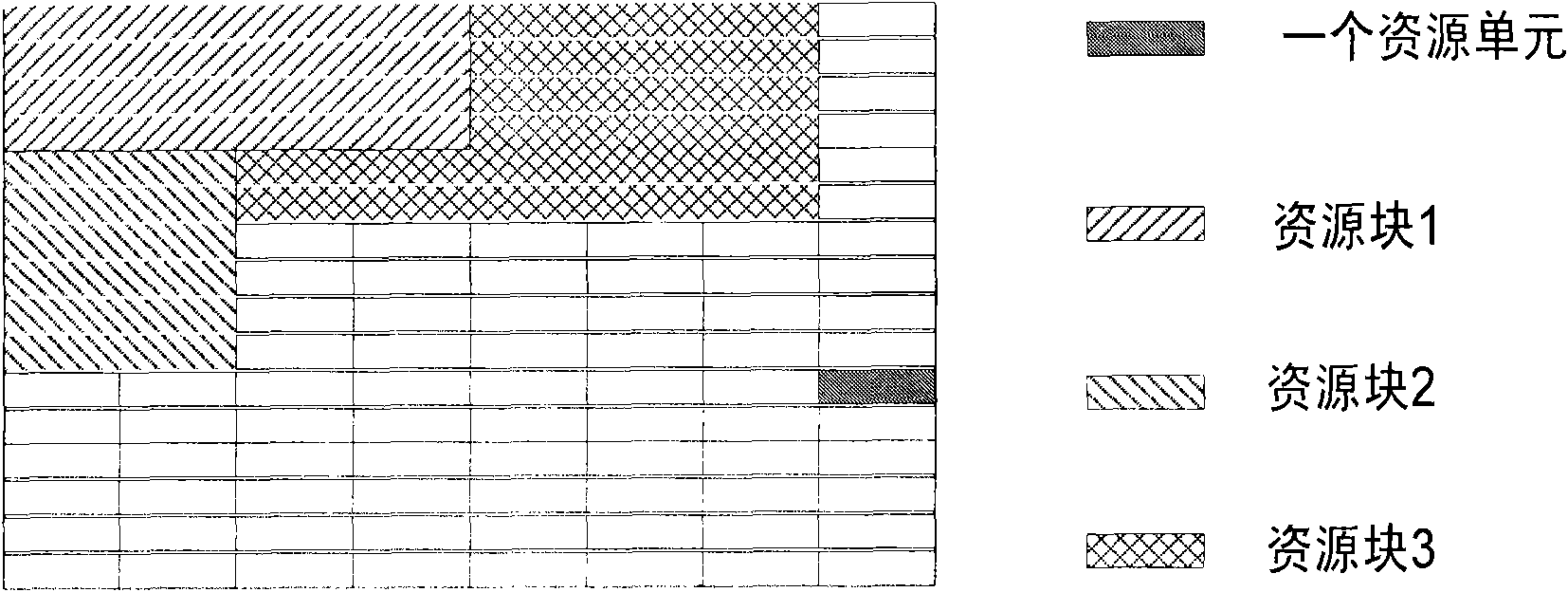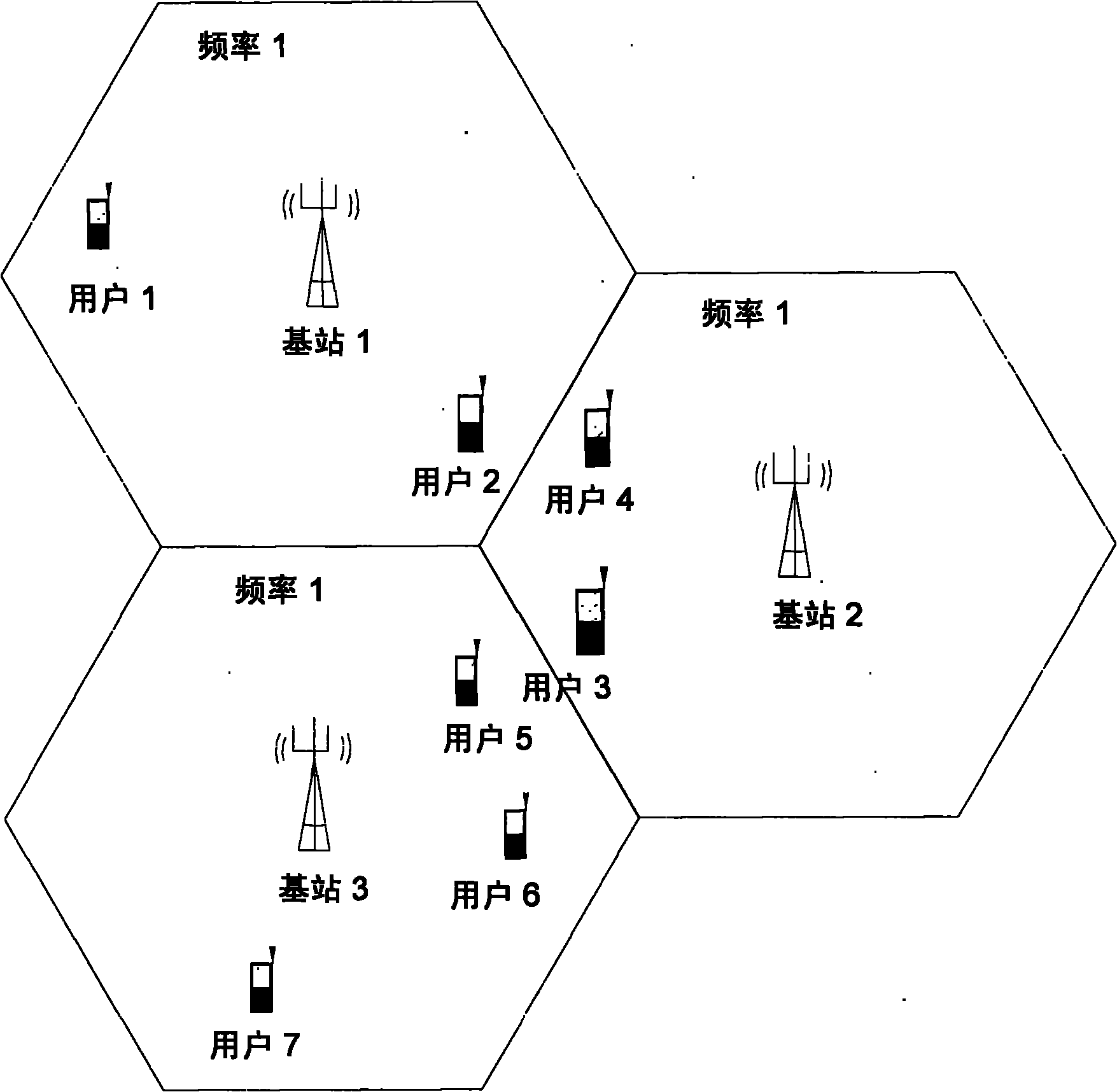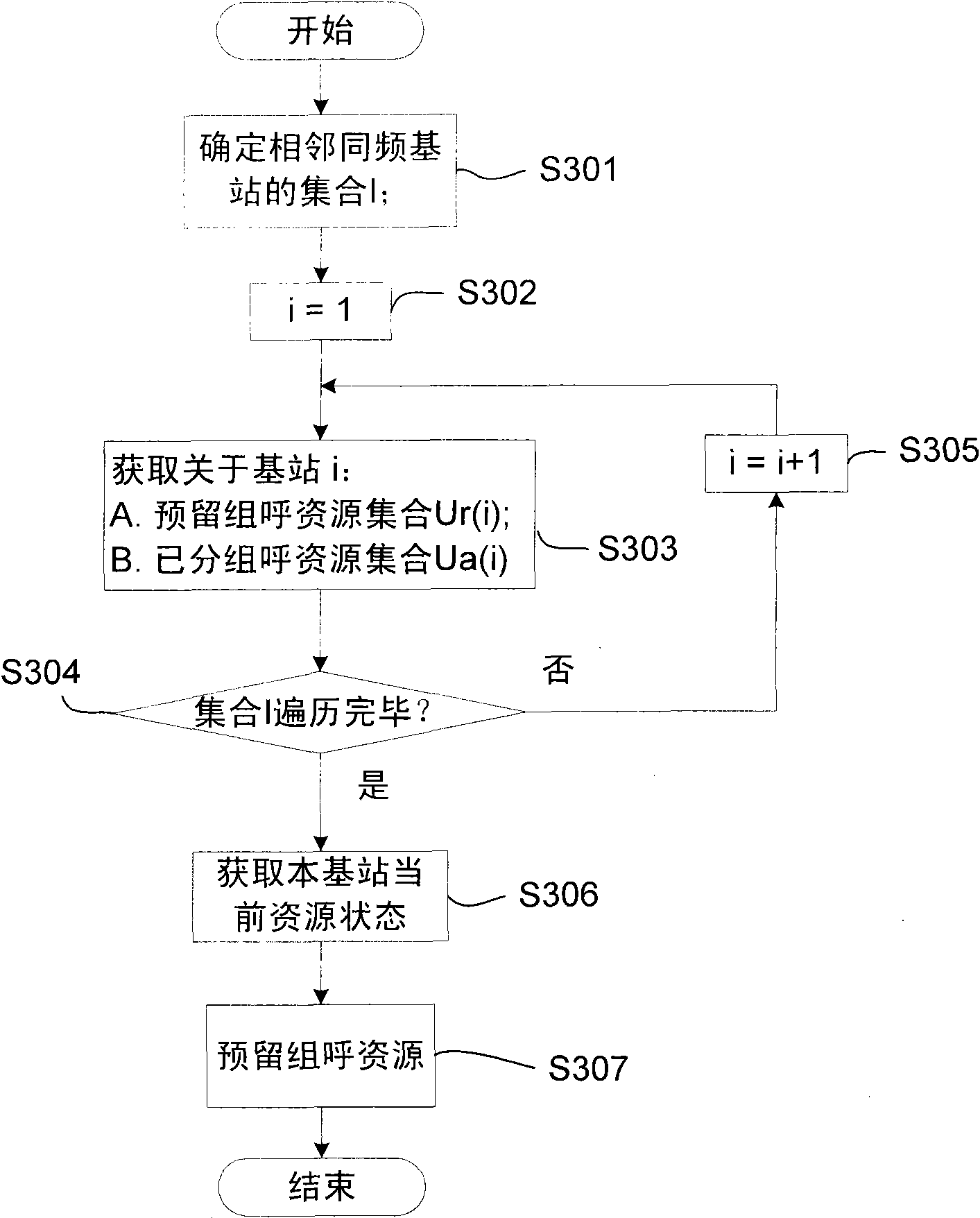Resource allocation method in wireless communication system and system
A wireless communication system and wireless resource technology, applied in the field of resource allocation, can solve problems such as inability to effectively respond to group call requests, inability to adopt some kind of interference suppression, etc., to achieve the effect of avoiding collisions and ensuring QoS
- Summary
- Abstract
- Description
- Claims
- Application Information
AI Technical Summary
Problems solved by technology
Method used
Image
Examples
Embodiment Construction
[0026] The specific implementation manners of the present invention will be described in detail below in conjunction with the accompanying drawings.
[0027] Taking an OFDMA system as an example, its time-frequency resources are as figure 1 As shown, a smallest rectangular unit represents a subcarrier (vertical) within a symbol time interval (horizontal), we call it a time-frequency grid, or a resource unit, which represents the system The smallest unit of time-frequency resources. Generally, a time-frequency resource with a fixed size is regarded as a subchannel and used as the smallest unit of resource allocation. When allocating resources for call requests, the base station allocates appropriate time-frequency resources and appropriate power according to the characteristics of different call services to meet the QoS of call services, and at the same time avoid wasting bandwidth and power resources as much as possible. The service can be a single call service or a group cal...
PUM
 Login to View More
Login to View More Abstract
Description
Claims
Application Information
 Login to View More
Login to View More - Generate Ideas
- Intellectual Property
- Life Sciences
- Materials
- Tech Scout
- Unparalleled Data Quality
- Higher Quality Content
- 60% Fewer Hallucinations
Browse by: Latest US Patents, China's latest patents, Technical Efficacy Thesaurus, Application Domain, Technology Topic, Popular Technical Reports.
© 2025 PatSnap. All rights reserved.Legal|Privacy policy|Modern Slavery Act Transparency Statement|Sitemap|About US| Contact US: help@patsnap.com



